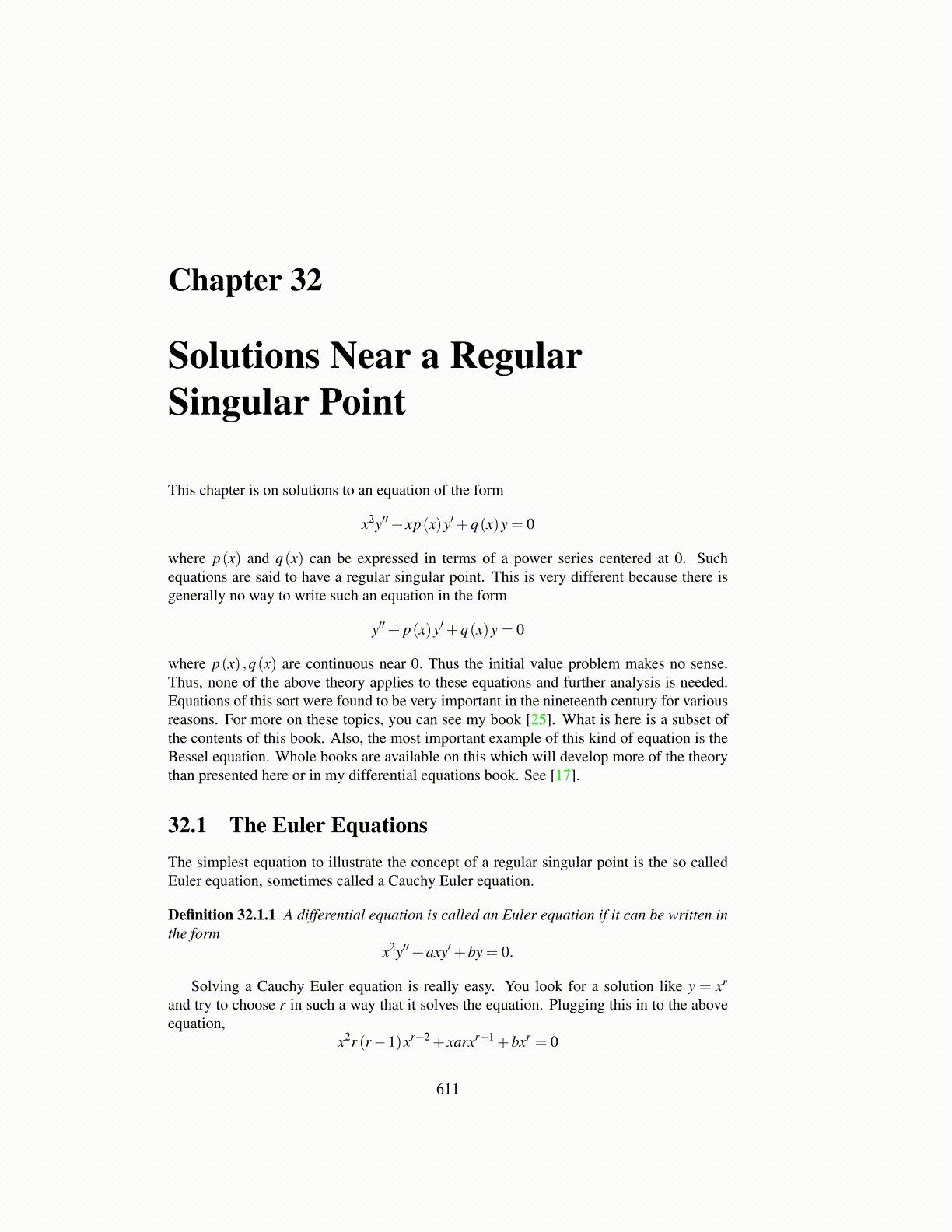
Chapter 32
Solutions Near a RegularSingular Point
This chapter is on solutions to an equation of the form
x2y′′+ xp(x)y′+q(x)y = 0
where p(x) and q(x) can be expressed in terms of a power series centered at 0. Suchequations are said to have a regular singular point. This is very different because there isgenerally no way to write such an equation in the form
y′′+ p(x)y′+q(x)y = 0
where p(x) ,q(x) are continuous near 0. Thus the initial value problem makes no sense.Thus, none of the above theory applies to these equations and further analysis is needed.Equations of this sort were found to be very important in the nineteenth century for variousreasons. For more on these topics, you can see my book [25]. What is here is a subset ofthe contents of this book. Also, the most important example of this kind of equation is theBessel equation. Whole books are available on this which will develop more of the theorythan presented here or in my differential equations book. See [17].
32.1 The Euler EquationsThe simplest equation to illustrate the concept of a regular singular point is the so calledEuler equation, sometimes called a Cauchy Euler equation.
Definition 32.1.1 A differential equation is called an Euler equation if it can be written inthe form
x2y′′+axy′+by = 0.
Solving a Cauchy Euler equation is really easy. You look for a solution like y = xr
and try to choose r in such a way that it solves the equation. Plugging this in to the aboveequation,
x2r (r−1)xr−2 + xarxr−1 +bxr = 0
611